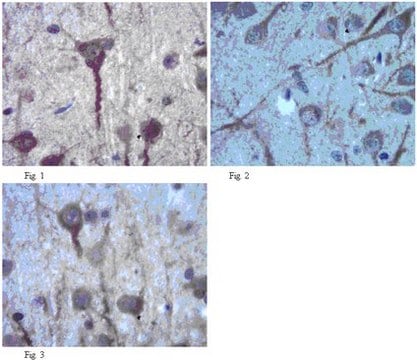B1758
Biocytin hydrochloride
≥98% (TLC), suitable for drug transporter assays
Sinónimos:
Nε-Biotinyl-L-lysine
About This Item
Productos recomendados
Nombre del producto
Biocytin hydrochloride, ≥98% (TLC)
Ensayo
≥98% (TLC)
Formulario
powder
técnicas
drug transporter assay: suitable
color
white to off-white
temp. de almacenamiento
−20°C
cadena SMILES
Cl.NC(CCCCNC(=O)CCCCC1SCC2NC(=O)NC12)C(O)=O
InChI
1S/C16H28N4O4S.ClH/c17-10(15(22)23)5-3-4-8-18-13(21)7-2-1-6-12-14-11(9-25-12)19-16(24)20-14;/h10-12,14H,1-9,17H2,(H,18,21)(H,22,23)(H2,19,20,24);1H
Clave InChI
FMGQMNFQNPUYBS-UHFFFAOYSA-N
Categorías relacionadas
Aplicación
- Biotinylated dextran amine and biocytin hydrochloride are useful tracers for the study of retinal projections in the frog.: This paper highlights the application of biocytin hydrochloride in tracing retinal projections in amphibians. The study demonstrates the efficacy of biocytin hydrochloride in neuroanatomical mapping, facilitating research in visual system development and function (Scalia et al., 1997).
Acciones bioquímicas o fisiológicas
Código de clase de almacenamiento
11 - Combustible Solids
Clase de riesgo para el agua (WGK)
WGK 3
Punto de inflamabilidad (°F)
Not applicable
Punto de inflamabilidad (°C)
Not applicable
Equipo de protección personal
Eyeshields, Gloves, type N95 (US)
Elija entre una de las versiones más recientes:
Certificados de análisis (COA)
¿No ve la versión correcta?
Si necesita una versión concreta, puede buscar un certificado específico por el número de lote.
¿Ya tiene este producto?
Encuentre la documentación para los productos que ha comprado recientemente en la Biblioteca de documentos.
Active Filters
Nuestro equipo de científicos tiene experiencia en todas las áreas de investigación: Ciencias de la vida, Ciencia de los materiales, Síntesis química, Cromatografía, Analítica y muchas otras.
Póngase en contacto con el Servicio técnico







![[D-Ala2]-Leucine enkephalin ≥97% (HPLC)](/deepweb/assets/sigmaaldrich/product/structures/205/481/4fd123c0-14c7-4f90-8bdc-9e54a4bea7f1/640/4fd123c0-14c7-4f90-8bdc-9e54a4bea7f1.png)
